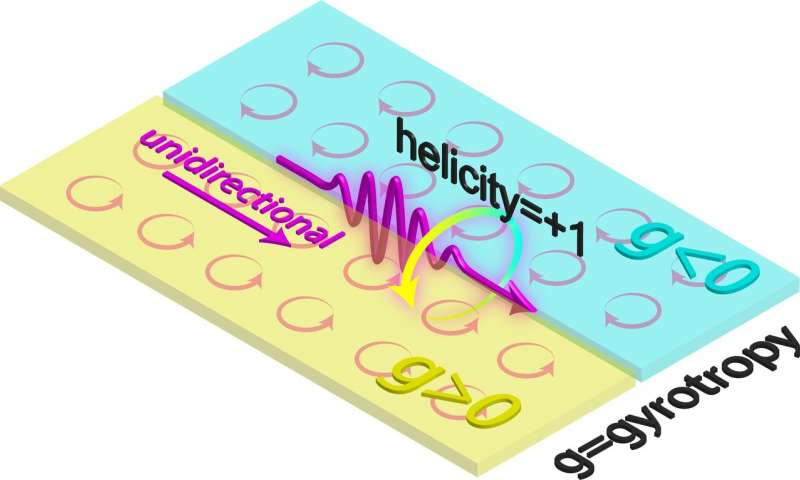Aug 20 2019
Scientists from Purdue University have produced a quantum spin wave for light that could act as an information carrier for next-generation nanotechnologies but with a special twist—they flow in only one direction.
 This is an interface of gyrotropic media. (Image credit: Zubin Jacob)
This is an interface of gyrotropic media. (Image credit: Zubin Jacob)
The article titled “Unidirectional Maxwellian spin waves” and authored by Todd Van Mechelen and Zubin Jacob has been published in the Nanophotonics open access journal on degruyter.com.
Nanoscale information technologies are dependent on the manipulation of particles such as photons and electrons. The photon, which is the long-distance information transmitter, is a boson, whereas the electron—the carrier of charge (electricity)—is a fermion.
The most significant difference between a boson and a fermion lies in the way they “spin.” Although electron spin is largely exploited in commercial nanotechnologies like magnetic memories, only recently has optical spin become a basic degree of freedom in nanophotonics, with potential applications in resonators, plasmonics, fiber optics, and even quantum metrology.
The reason for the upsurge of studies into optical spin is the exceptional features of electromagnetic waves that are strongly confined. At the nanometer scale, light’s spin and direction of motion are intrinsically sealed to one another.
The scientists employed several designs to realize this behavior, specifically, an interface of mirror-symmetric gyrotropic media. Gyrotropy is a type of response of materials to light waves that transfer the electrons’ spinning behavior to photons.
Our research opens up the possibility of new applications where devices communicate information in one direction but block it completely in the reverse. This is important for the safe functioning of high power devices as well as for reducing interference between transmitted/received electromagnetic signals from cellphone antennas.
Zubin Jacob, Purdue University